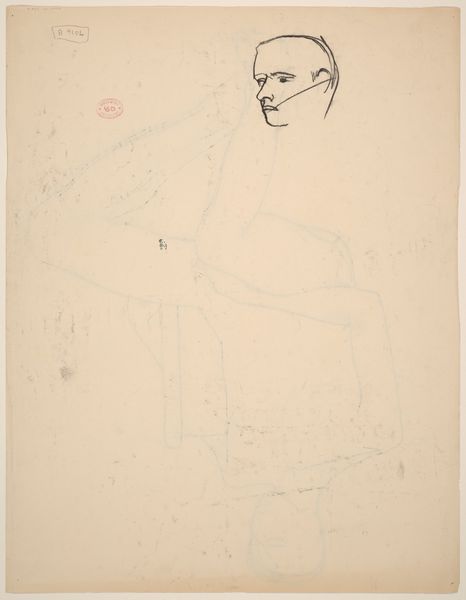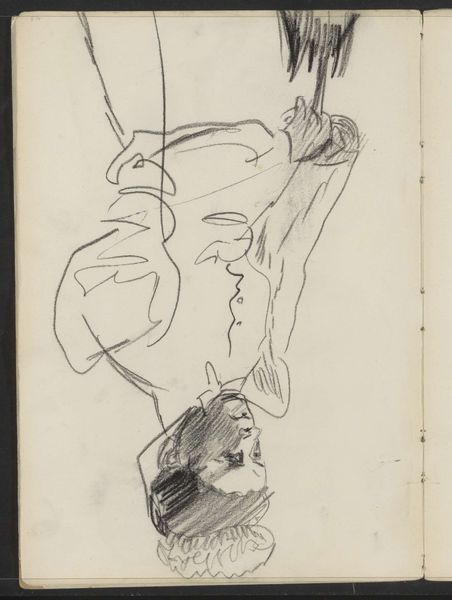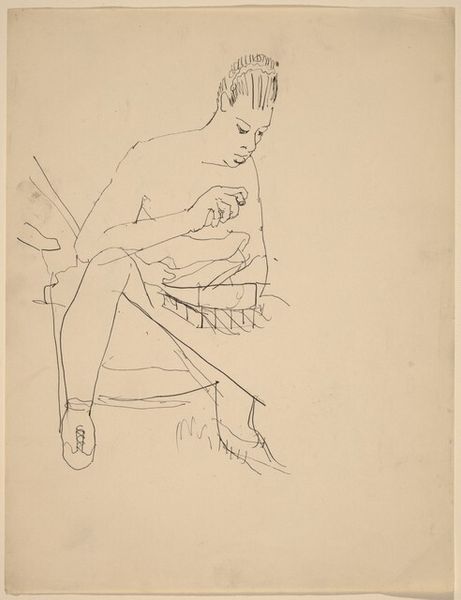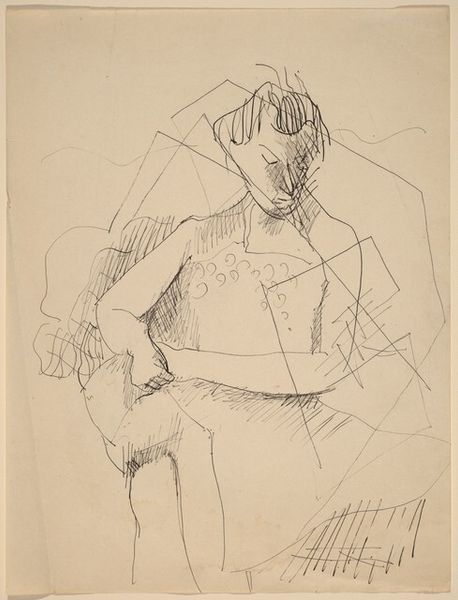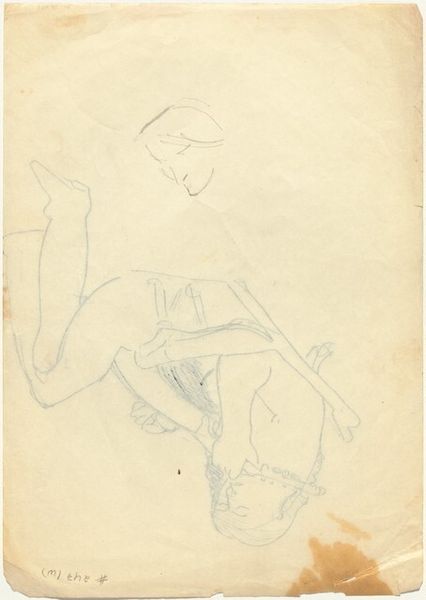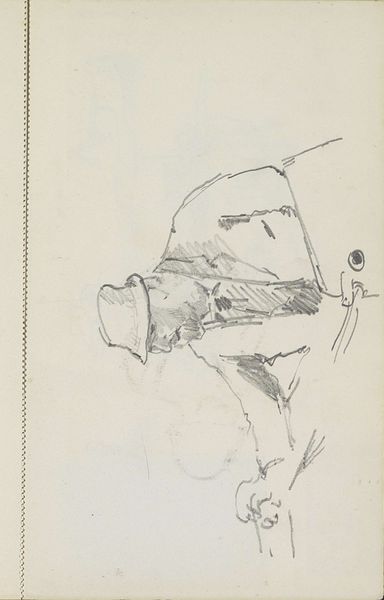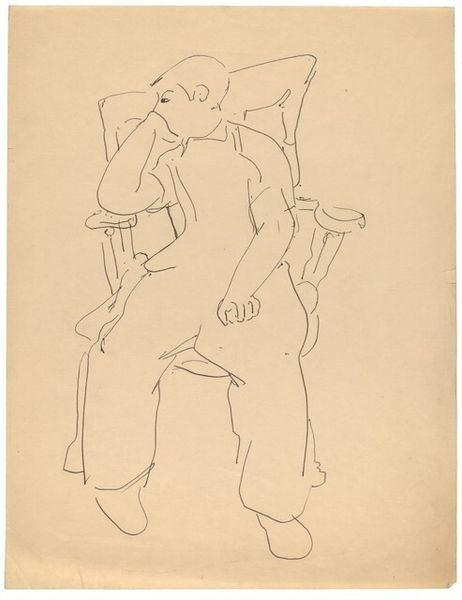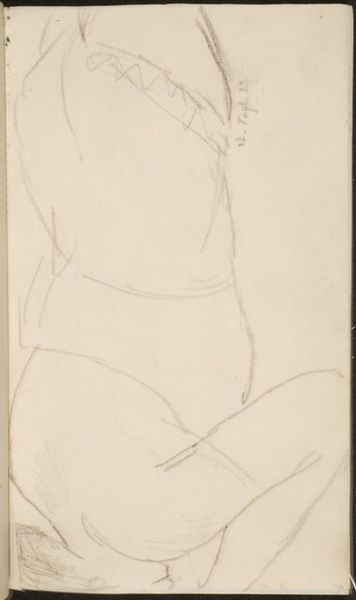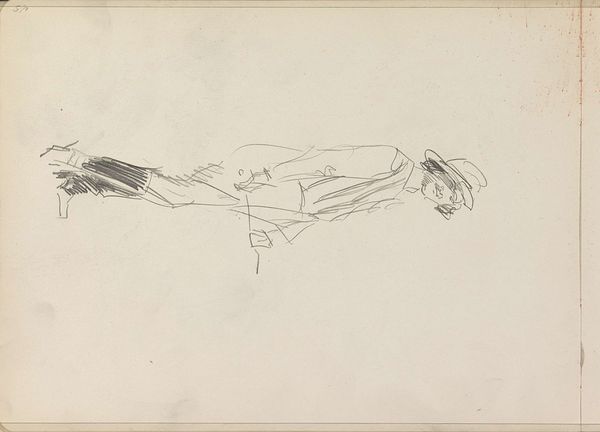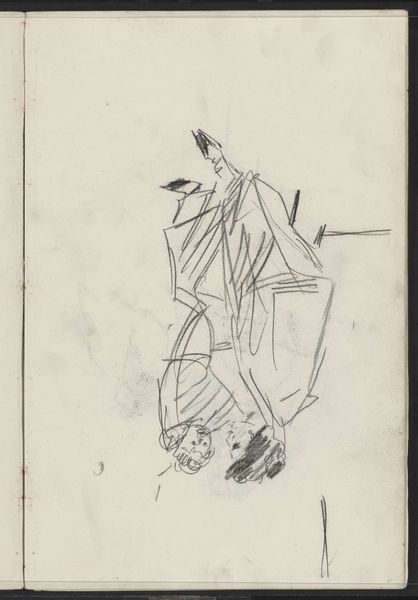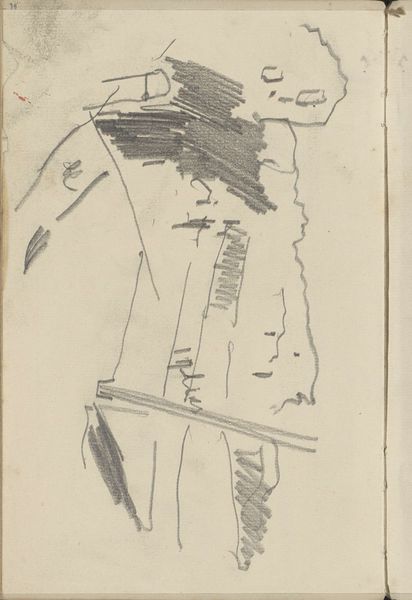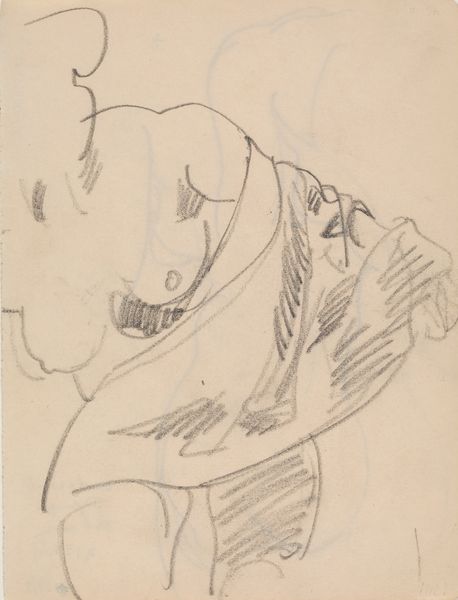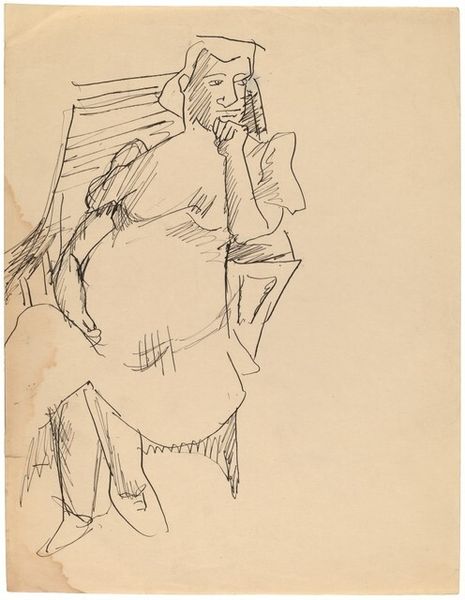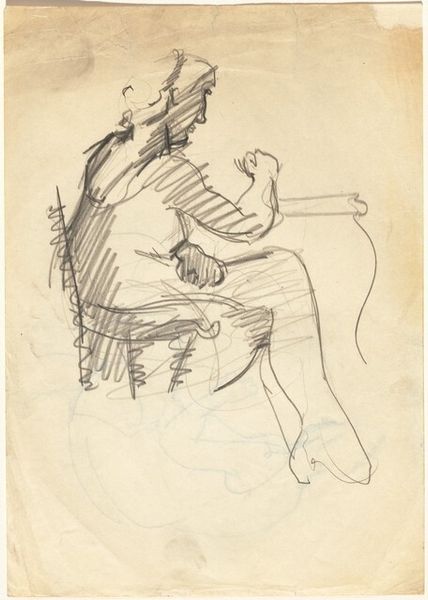
drawing, ink, pen
#
portrait
#
drawing
#
ink drawing
#
pen sketch
#
pencil sketch
#
figuration
#
ink
#
pen
Copyright: National Gallery of Art: CC0 1.0
Curator: This drawing, simply titled "Man Seated in Wicker Chair, Turned to the Left," is attributed to Mark Rothko. We see the sitter in profile, his gaze directed towards something outside the frame. It’s an intimate sketch, done with a pen and ink by the looks of it. Editor: Immediately, I'm struck by a sense of wistful contemplation. The lines are spare, almost tentative, which contributes to the mood. The sitter seems detached, perhaps burdened by something, which makes one question the history of its context. Curator: Well, the date is unknown. But let's think about chairs. Beyond their mundane functionality, chairs function as symbols of power, status, and domesticity throughout art history. The figure's casual pose disrupts these notions, and his expression conveys weariness, not the traditional poise associated with portraiture of that era. What can you tell us about wicker chairs, in this instance? Editor: The wicker itself carries potent cultural weight. We've inherited them as signifiers for both middle class, and bourgeois gentility. The sitter, a man reclined within a domestic container and posed within a cultural symbol, suggests that a commentary exists, maybe regarding its historical construction, class or place within art history itself. It carries an echo. Curator: Indeed, a sense of displacement resonates, enhanced by the artist's fluid lines. And notice how the line doesn’t commit entirely to either contour or shadow—there’s a certain unresolved quality to the form, it could even signify inner conflict. Editor: Precisely. I wonder too, about the direction of his gaze. Is he passively observing a system he's a part of, or maybe just reflecting on an experience that's happened within his constructed, yet natural environment. Maybe the negative space that he faces serves as a marker for potential agency. Curator: Perhaps. Overall the work exists in the context of shifting attitudes about class and representation in art, and the cultural memory associated with domestic space, the composition’s symbolism offers a lens into his individual state, so a discussion surrounding subjectivity or vulnerability makes for an insightful investigation. Editor: This piece reveals that the familiar object can have the uncanny effect of conveying hidden emotional, cultural, and psychological experiences, particularly in periods marked by shifts in cultural dynamics, revealing something quietly unnerving, a lingering reminder of its powerful effect on those of us examining it so much later.
Comments
No comments
Be the first to comment and join the conversation on the ultimate creative platform.
